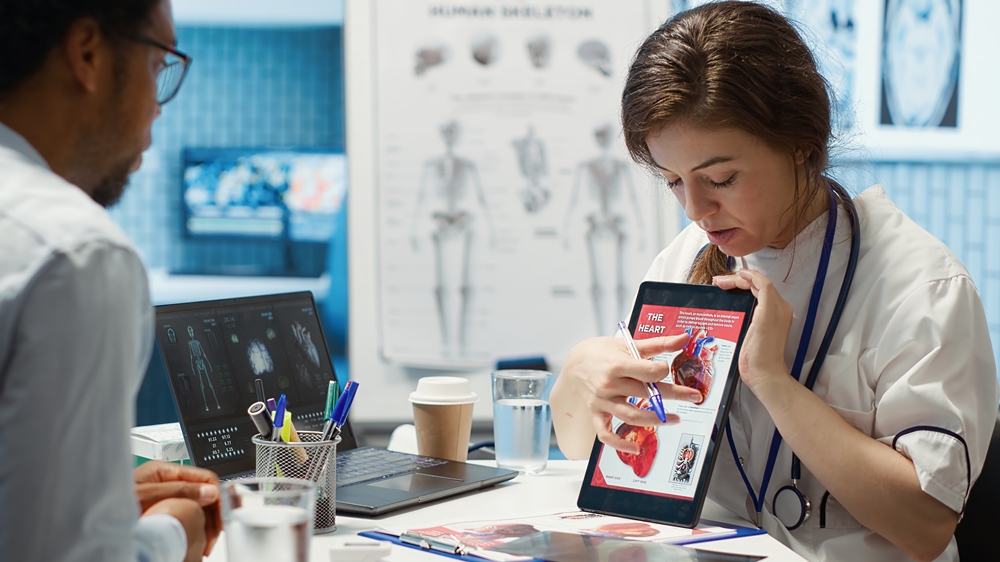Insights
Addressing the rising burden of benign prostatic hyperplasia with minimally invasive treatments to tackle healthcare pressure

Benign prostatic hyperplasia (BPH) is a rapidly growing urological concern driven by a global ageing population.
With healthcare systems under strain due to increased demand, resource limitations, and surgical backlogs, hospitals may benefit from technologies that are less invasive for patients and less resource intensive for healthcare systems.
Among minimally invasive treatments for BPH, Rezūm™ Water Vapour Therapy, now with the recently released next-generation Rezūm™ EVO Console, has the potential to deliver operational efficiency to hospitals.
Burden of Benign Prostatic Hyperplasia
BPH, or enlarged prostate, is a non-cancerous condition common in aging men. As the prostate grows, it can compress the urethra, causing lower urinary tract symptoms (LUTS).
With life expectancy increasing worldwide, BPH has become a major global urological concern: in the last two decades, its prevalence has increased by more than 70 per cent, now affecting 94 million men over the age of 40 worldwide, particularly in low- and middle-income countries experiencing rapid demographic changes.
In Europe, BPH incidence rates are expected to continue rising steadily, especially in populations aged 60–79.
About half of men at age 60 show some signs of BPH; by age 85, the figure rises to 90 per cent.
While medications are the first-line treatment for mild-to-moderate symptoms, one in ten diagnosed patients may require surgery for lasting relief.
Minimally invasive treatments for potential improvement in operational efficiency
BPH treatment options range from lifestyle changes to medication and surgery.
The European Association of Urology (EAU) considers transurethral resection of the prostate (TURP) the standard surgical approach.
However, TURP can be considered resource-intensive for healthcare systems and invasive for patients: it requires general or spinal anaesthesia, access to an operating room and one or more days of hospital stay.
It is known to have complications, including bleeding, strictures and sexual side effects, sometimes requiring a further procedure.
With hospitals facing surgical backlogs, bed and staff shortages, healthcare providers are increasingly looking for solutions that balance clinical efficacy with operations efficiency and quality of care.
At the same time, patients increasingly prefer quicker recovery, fewer sexual side effects and less invasive options.
Compared to TURP, minimally invasive surgical treatments for BPH have the potential to generate operational benefits for hospitals, as patients can leave sooner (1) and be treated more often in outpatient settings, (2) which may positively impact hospital capacity.
Given these dynamics, it’s probably no surprise that the use of TURP declined by 9.5 per cent between 2019 and 2023 in Europe, with a corresponding 10 per cent rise of innovative options like laser technologies and minimally invasive surgical treatments such as Rezūm™ Water Vapour Therapy (3).
Rezūm Water Vapour Therapy: a proven and cost-efficient minimally invasive treatment
Rezūm Therapy is a minimally invasive technique that uses water vapour to shrink prostate tissue.
It provides durable LUTS relief through five years following treatment without clinically significant impact to erectile and ejaculatory dysfunction (4).
It treats a wide range of patients, including those ineligible for TURP or general anaesthesia (5) and those with more specific anatomies, like median lobe enlargement (6).
The average procedure takes less than 10 minutes, it is suitable for outpatient settings under local anaesthesia (7) and carries low post-operative burden, thereby reducing re-admissions and follow-ups, thus creating capacity gains for the hospital (8).
Budget impact analyses conducted in various European countries have demonstrated the potential of Rezūm adoption to lower expenditure for national healthcare systems, through reduced hospital bed days and operating time.
In the UK, NICE estimates £550 savings per patient over four years compared to TURP (9).
Rezūm™ EVO Console: innovation for optimised care
Continuous innovation is key in making minimally invasive treatments more suitable to everyday clinical needs.
The next-generation Rezūm™ EVO Console, recently introduced in Europe, brings in design developments aimed at improving usability and optimising operational efficiency.
Staff can work independently across different clinical settings, thus aligning treatment delivery with the growing demand for outpatient care.
“In developing Rezūm Evo Console, we listened carefully to urologists’ insights on how to optimise their efficiency,” said Miguel Aragon, vice president of Urology and Capital & Services in Europe, Middle East and Africa at Boston Scientific.
“The new console is designed to streamline ambulatory procedures in terms of space and resources, a meaningful advancement in BPH care that reflects our commitment to science and innovation.”
As healthcare systems need to deliver greater efficiency, there is an opportunity to refine existing minimally invasive procedures through innovations that better support both operational needs and patient care, particularly in response to the challenges of an aging population.
Read here to learn more about Rezūm EVO Console.
References
1 Length of hospital stays: MIST (0.2–1.4 days) vs. TURP (2–5.25 days). Source: B.W. Turney, J.-N. Cornu, P. Schatteman et al., Evolution of the Endoscopic Surgical Approach for Benign Prostatic Obstruction in European Countries, Eur Urol Focus (2025), https://doi.org/10.1016/j.euf.2025.03.014
2 Outpatient rates: MIST (78%) vs. TURP (mostly inpatient: 1–12%). Source: B.W. Turney, J.-N. Cornu, P. Schatteman et al., Evolution of the Endoscopic Surgical Approach for Benign Prostatic Obstruction in European Countries, Eur Urol Focus (2025), https://doi.org/10.1016/j.euf.2025.03.014
3 B.W. Turney, J.-N. Cornu, P. Schatteman et al., Evolution of the Endoscopic Surgical Approach for Benign Prostatic Obstruction in European Countries, Eur Urol Focus (2025), https://doi.org/10.1016/j.euf.2025.03.014
4 McVary KT, ElArabi A, Roehrborn C. Preservation of Sexual Function 5 Years After Water Vapor Thermal Therapy for Benign Prostatic Hyperplasia. Sex Med. 2021 Oct 30;9(6):100454.
5 McVary KT, Rogers T, Roehrborn CG. Rezūm water vapor thermal therapy for lower urinary tract symptoms associated with benign prostatic hyperplasia: 4‐year results from randomized controlled study. Urology. 2019 Apr;126:171‐9.
6 Woo HH, Gonzalez RR. Perspective on the Rezūm® System: a minimally invasive treatment strategy for benign prostatic hyperplasia using convective radiofrequency water vapor thermal therapy. Med Devices (Auckl). 2017;10:71‐80.
7 McVary KT, Gittelman MC, Goldberg KA, Patel K, Shore ND, Levin RM, Pliskin M, Beahrs JR, Prall D, Kaminetsky J, Cowan BE, Cantrill CH, Mynderse LA, Ulchaker JC, Tadros NN, Gange SN, Roehrborn CG. Final 5-Year Outcomes of the Multicenter Randomized Sham-Controlled Trial of a Water Vapor Thermal Therapy for Treatment of Moderate to Severe Lower Urinary Tract Symptoms Secondary to Benign Prostatic Hyperplasia. J Urol. 2021 Sep;206(3):715-724. doi: 10.1097/JU.0000000000001778. Epub 2021 Apr 19. PMID: 33872051
8 De la Cuadra-Grande, A., Rioja-Zuazu, J., Domínguez-Esteban, M., Torres, E., Blissett, R., Woodward, E., … Fernández-Arjona, M. (2023). Budget impact analysis of transurethral water vapor therapy for treatment of lower urinary tract symptoms associated with benign prostatic hyperplasia in the Spanish national healthcare system. Expert Review of Pharmacoeconomics & Outcomes Research, 23(5), 499–510. https://doi.org/10.1080/14737167.2023.2189591
News
Lack of free time could increase dementia risk

A lack of free time could be raising dementia risk, with researchers calling for action on ‘temporal inequity’ to protect brain health.
A new perspective article from the University of New South Wales (UNSW) in Australia argues that ‘time poverty’ – not having enough discretionary time – may limit people’s ability to prevent dementia, particularly among women and lower-income groups.
The researchers say people need sufficient time to support brain health through exercise, sleep, nutrition and social connection.
“Up to 45 per cent of dementia cases worldwide could be prevented if modifiable risk factors were eliminated,” says epidemiologist Susanne Röhr.
“However, many people simply don’t have the discretionary time to exercise, rest properly, eat healthily, or stay socially connected.
“This lack of time – what we call ‘time poverty’ – is a hidden barrier to dementia risk reduction.”
The team estimates that around 10 hours a day are required for brain-care activities such as adequate sleep, healthy eating, physical activity and social interaction.
Yet, the pressures of modern life – from work demands to caring responsibilities – often make this unrealistic.
Women face particular challenges, handling most caregiving duties globally, while lower-income workers often have to work longer or irregular hours, further reducing their free time.
“For many, especially those in disadvantaged or caregiving roles, this simply isn’t achievable under current conditions,” says psychology researcher Simone Reppermund.
“Addressing time poverty is therefore essential if we are serious about preventing dementia.”
The researchers call for broader social measures, including improved childcare, more flexible work arrangements such as four-day work weeks, better public transport and the right to disconnect from work.
They warn that if such steps are not taken, dementia rates will continue to rise, with the greatest impact on disadvantaged populations.
“Brain health policy and research have focused heavily on individual behaviour change,” says neuropsychiatrist Perminder Sachdev.
“But unless people are given the temporal resources to act on these recommendations, we risk leaving behind those who need it most.
“Just as governments act on income inequality, we need to act on temporal inequity.”
The researchers add that dementia-related lifestyle risks – such as loneliness, poor diet, inadequate sleep, lack of exercise and poor oral hygiene – all require time to manage effectively.
They say this highlights a shift from focusing solely on personal choice to recognising the wider structural barriers that stop people from reducing their dementia risk, even when they know what to do.
News
Research reveals potential ‘two-in-one’ treatment for diabetes and heart disease

A new experimental drug called IC7Fc could help treat both diabetes and heart disease by lowering cholesterol and reducing inflammation in the arteries, researchers have found.
In tests on mice prone to cardiovascular disease, the drug significantly reduced blood fats (triglycerides) and cholesterol while slowing the build-up of fatty deposits in arteries that can cause heart attacks and strokes.
Building on earlier studies showing IC7Fc’s benefits for type 2 diabetes, the international research suggests the treatment may target both metabolic and cardiovascular disease.
The work was led by Leiden University Medical Center in the Netherlands, in collaboration with Monash University and other institutions.
IC7Fc works by reducing atherosclerosis — the narrowing and hardening of arteries caused by fatty plaque build-up.
This process limits blood flow to vital organs and is a major cause of cardiovascular events.
Professor Mark Febbraio from the Monash Institute of Pharmaceutical Sciences said: “Our earlier studies showed IC7Fc could help manage type 2 diabetes, a metabolic disease.
“This new research shows it can also reduce atherosclerosis, meaning it slows the ‘clogging’ of the arteries, where fatty deposits build up and restrict blood flow to the heart,” said
“Heart disease remains the world’s biggest killer, driven largely by atherosclerosis. Even with common treatments that lower blood pressure and cholesterol, many people are still at risk, showing there’s more work to do.”
Earlier studies found IC7Fc reduced appetite and body fat in obese mice.
However, in this new study using lean mice prone to high cholesterol and artery disease, the drug did not affect body weight or food intake.
This suggests IC7Fc’s weight-loss effects may mainly apply to obesity, while its heart-protective benefits — such as reducing cholesterol build-up in arteries — could also help lean individuals.
The findings highlight the drug’s potential as a versatile treatment and the need for further research in humans.
“These results suggest IC7Fc could offer a dual benefit — helping reduce obesity in some, while protecting the heart in others,” Professor Febbraio said.
“It’s an exciting step towards a treatment that targets both metabolic and cardiovascular disease.”
Professor Febbraio has been central to the discovery and long-term research into IC7Fc as a potential treatment for metabolic diseases.
The research team is now planning human trials to test whether the same benefits can be replicated in patients.
News
Creativity helps keep the brain young, study finds

Tango dancers have brains that appear more than seven years younger than their actual age, with creativity linked to slower brain ageing across all art forms, new research has found.
Musicians and visual artists showed brains about five to six years younger, while gamers’ brains appeared around four years younger, according to research examining how creative activities affect brain health.
The more participants practised their art form, the stronger the anti-ageing effect.
“Creativity protects brain areas that are vulnerable to ageing and makes brain communication more efficient,” said Carlos Coronel, postdoctoral researcher at the Latin American Brain Health Institute.
He compared the effect to “building more, larger, and higher-quality roads to communicate between cities within a country.”
Researchers collected data from almost 1,400 people across 13 countries, including expert tango dancers, musicians, visual artists and gamers, and non-experts matched for age, education and gender.
The work, led by the Latin American Brain Health Institute at Universidad Adolfo Ibáñez and Trinity College Dublin, used artificial intelligence “brain clocks” to estimate brain age.
Brain clocks are AI models that estimate how old a brain appears based on scans or patterns of neural activity.
When someone’s predicted brain age is lower than their chronological age, it suggests their brain is ageing more slowly and functioning more efficiently for their years.
The researchers recorded brain activity using magnetoencephalography and electroencephalography — techniques that measure electrical activity in real time.
They then trained computer models to create a brain clock for each participant.
Even short-term creative training produced benefits. Non-experts who trained for 30 hours in the strategy video game StarCraft II showed a reduction in brain age of between two and three years.
The team also used “digital brains” — biophysical computer simulations that replicate real brain activity using mathematical equations — to understand why creativity may protect against ageing.
These models showed that creative activities help key brain areas work better together, especially regions involved in focus and learning that typically age first.
Professor Agustín Ibáñez from Trinity College Dublin said the research “reframes creativity as a biological pathway to brain health and resilience, not only a cultural or psychological phenomenon.”
The findings suggest that creativity keeps connections between brain regions stronger and more flexible, particularly in areas that usually decline with age.
It did not matter which art form participants practised — dancing, painting, music or gaming all showed similar effects.
“By showing that artistic engagement can delay brain ageing, this research helps us reimagine the role of creativity in education, public health, and ageing societies,” the researchers said.
They described creativity as a “scalable, accessible and deeply human mechanism” to sustain cognitive and emotional wellbeing across diverse populations and lifespans.
Unlike many brain health interventions, creative activities also provide enjoyment alongside biological benefits.
“Your next dance step, brush stroke, or musical note might just help your brain stay a little younger,” the researchers concluded.

 News2 months ago
News2 months agoHalf of people stop taking weight-loss drug within a year, study finds

 News3 weeks ago
News3 weeks agoDementia scan could boost UK diagnosis rates

 News1 month ago
News1 month agoRound up: Joint venture to advance Klotho-based therapies, and more

 Wellness2 weeks ago
Wellness2 weeks agoResearchers find new drug extends lifespan

 News2 months ago
News2 months agoThousands in England unable to access weight loss jabs via NHS, figures reveal

 Insights1 month ago
Insights1 month agoBrain shape changes could offer early warning signs of dementia, study suggests

 News5 days ago
News5 days agoHospices in England forced to cut beds and staff amid funding crisis

 Insights2 months ago
Insights2 months agoRound up: First AI-powered app for longevity and more






























